The death counters: How journalists in Narendra Modi’s home state exposed India’s Covid-19 deception
When Rajesh Pathak’s wife took their daughter to get tested for Covid-19 at a Gandhinagar hospital on April 1, she saw two plastic-covered dead bodies being moved out of the premises. That day, the government figures listed zero Covid deaths in Gandhinagar. The situation alarmed Pathak, resident editor of a 98-year-old local newspaper Sandesh’s Ahmedabad edition.
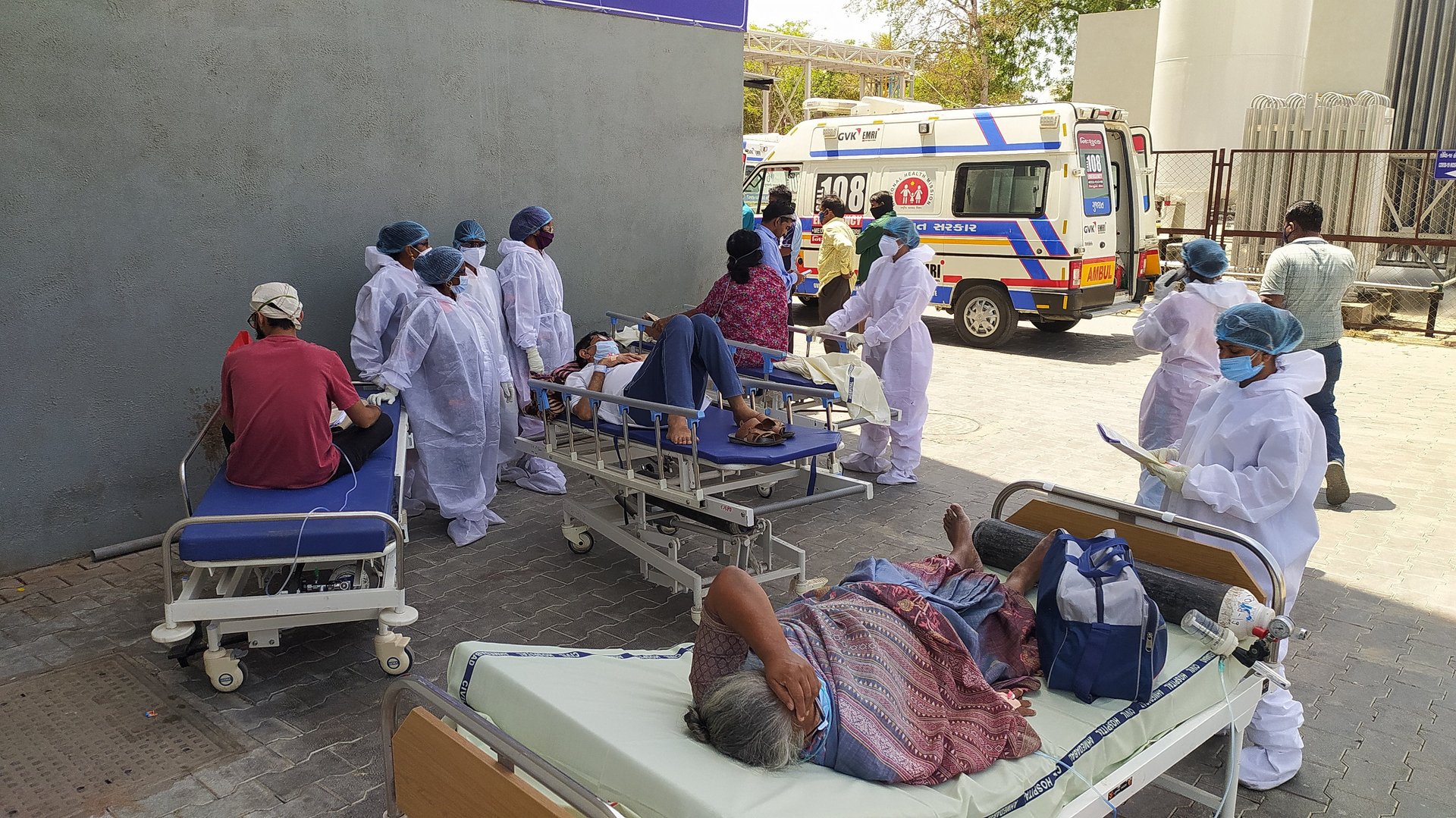

When Rajesh Pathak’s wife took their daughter to get tested for Covid-19 at a Gandhinagar hospital on April 1, she saw two plastic-covered dead bodies being moved out of the premises. That day, the government figures listed zero Covid deaths in Gandhinagar. The situation alarmed Pathak, resident editor of a 98-year-old local newspaper Sandesh’s Ahmedabad edition.
Pathak sent his reporters digging. Sandesh journalists talked to sources at the biggest hospital in the state’s biggest city—the 1,200 bed Civil Hospital in Ahmedabad inaugurated by prime minister Narendra Modi in March 2019. With every conversation, their suspicions became clearer: there was a glaring gap in the Covid death counting at the facility.
The team then took it upon itself to piece together the reality.
At midnight on April 12, three of the Gujarati newspaper’s staff—photographer Hitesh Rathod, and reporters Ronak Shah and Imitiaz Ujjainwala—sat outside the massive facility that includes six hospital buildings. They counted the number of dead bodies moved from the premises until 5pm that day. In those 17 hours, they saw at least 63 bodies leave the single facility. The government data for the day reported just 20 Covid deaths in all of Ahmedabad.
Undercounting of dead bodies was just the tip of the iceberg. Since that first night, the 20-person newsroom of Sandesh in Ahmedabad has worked tirelessly to document several other proofs of failure in Indian prime minister Narendra Modi’s home state.
Modi and the flawed Gujarat model
In many ways, Bharatiya Janata Party (BJP)-ruled Gujarat is a microcosm for everything going wrong with India’s Covid-19 management.
Before Modi rose to national fame, he spent nearly 15 years as the chief minister of the western Indian state. His tenure is often cited as an example of strong governance and rapid development. He is credited with building new highways and airports, and making power available 24/7 not just in cities but also in villages.
Modi boosted industrial development in the state with investments, tax concessions, and subsidies. And when he campaigned to become prime minister in 2014, he promised to bring this “Gujarat model” to the entire country.
But what good is this model if it collapses in the face of a healthcare crisis?
Before the 2014 elections, Nobel prize-winning economist Amartya Sen had questioned the lack of emphasis on health in this strategy. Others have raised similar concerns. “Nobody understood that the Gujarat model means only publicity, good headlines, and PR management,” Rajeev Satav, a member of rival Indian National Congress, told reporters in April. He alleged that in the last 25 years the BJP has been in power in Gujarat, it has not added a single hospital in the state. Satav passed away due to Covid-related complications on May 16.
Over the past few years, the state’s healthcare budget has dipped. There are just 75 hospital beds per 100,000 citizens in Gujarat, compared with the national average of 118. Gujarat’s government hospitals have a worrying shortage of doctors. The state also has the highest number of black fungus cases and the highest case-mortality ratio in the country.
When Gujarat began crumbling under the brutal second wave of coronavirus in April, and public data were scarce, the Sandesh team scrambled on the ground. They visited various hospitals, crematoriums, and gram panchayats (village councils), trying to ascertain and record the extent of the crisis.
Counting Gujarat’s Covid-19 deaths at a larger scale
When the reporters camped outside the Ahmedabad Civil Hospital on April 12, it kicked off an investigation into the undercounting of deaths across Gujarat. That night, at the “death desk”—the term reporter Shah used for the area where families collected dead bodies—there was a waiting time of up to 15 hours. He suspected some of the delays were deliberate to avoid crowding at crematoriums, which were already full to the brim.
The team at Sandesh wanted to come up with a more comprehensive number of undercounting in major cities. They thought gathering counts of pyres across multiple crematoriums could get them closer to the actual death toll in the city. But of course, owners and high-level officials were either unreachable or tight-lipped. They needed a covert plan.
On the night of April 16, Rathod, Shah, and Ujjainwala drove over 150 km (93 miles), chatting with lower-level staff at 21 different crematoriums, gathering estimates of how many Covid-infected bodies were typically cremated each day.
On the day of their investigation, there were 25 official deaths in Ahmedabad. Their reporting pegged the number at nearly 10 times that.
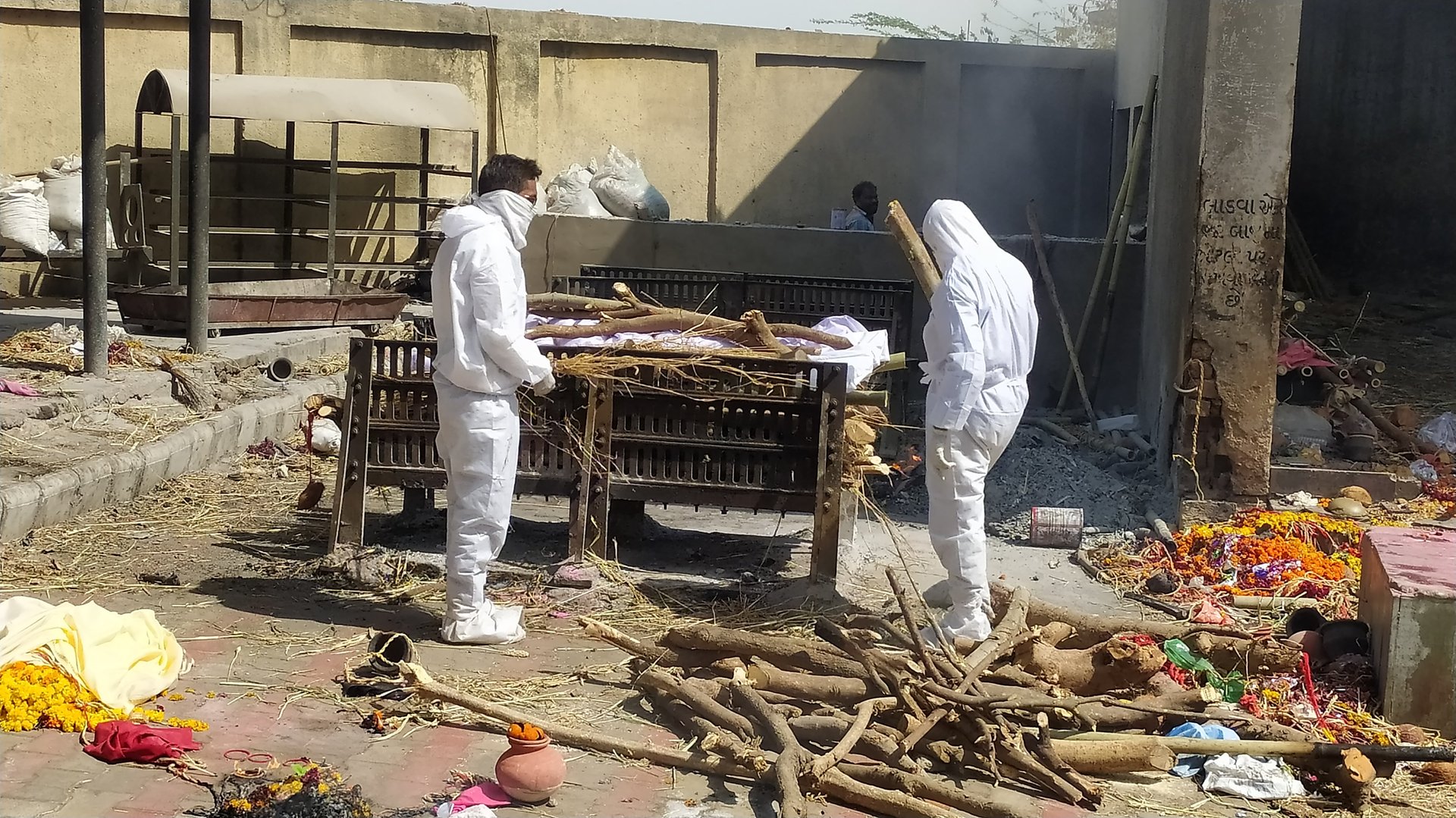
“In my 32 years of life, it’s the first time I’ve seen so many deaths,” said Rathod.
“These people are hiding figures,” he went on, in exasperation. ”I have seen demonetization in 2016, and since then, people are only being made to stand in lines. They stood in line for ATMs then. Now for Covid-19 treatment, you have to stand in line. Then to collect a dead body, you have to stand in line. And when you go to the crematorium, you have to wait in line for another 8-10 hours. It’s become a tradition for the Modi government to make people wait in line.”
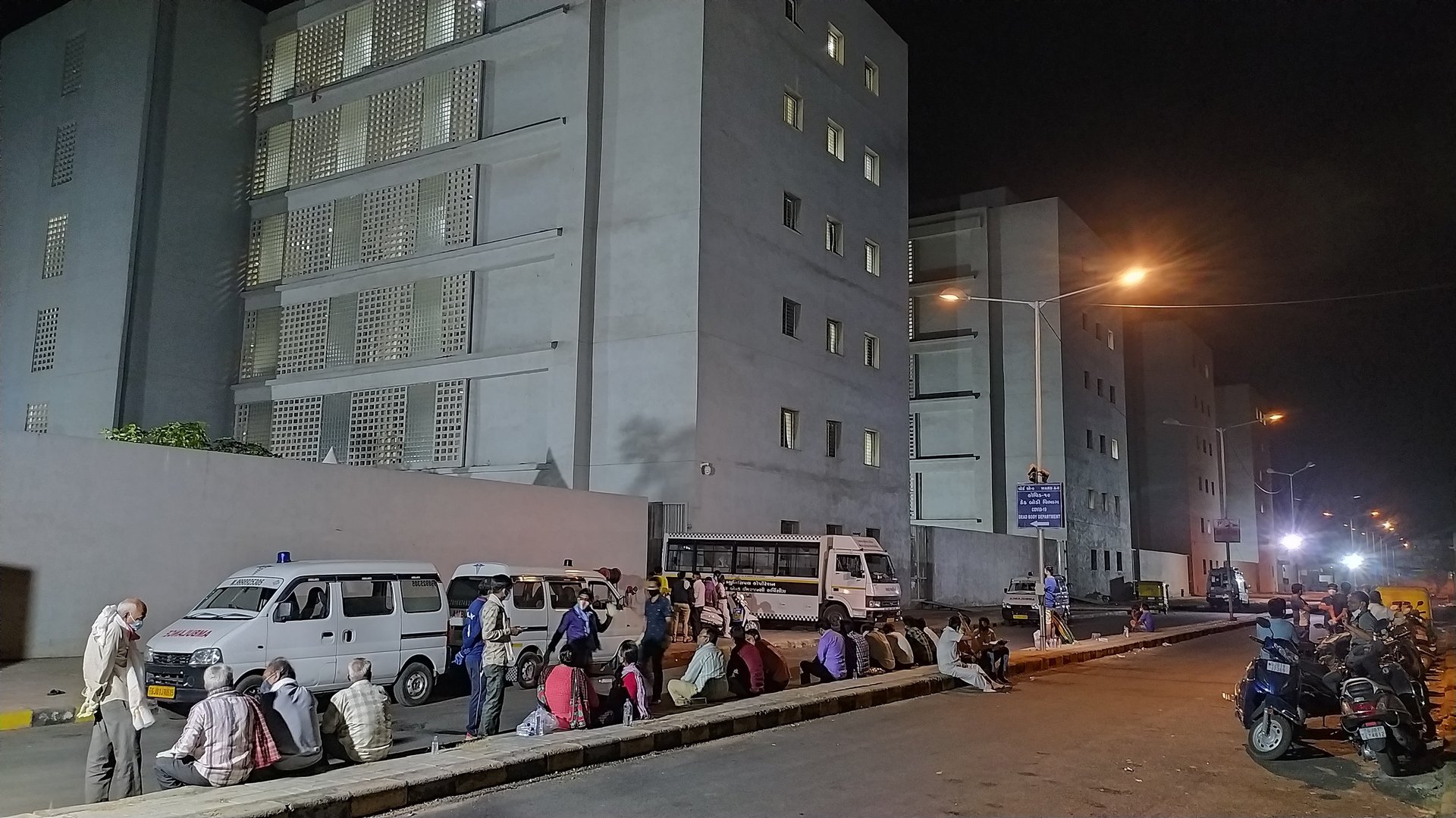
Simultaneously, all six editions of Sandesh across the state banded together. There weren’t enough hours in the day to visit multiple locations so reporters in Ahmedabad, Gandhinagar, Vadodara, Surat, Rajkot, Bhavnagar, and Jamnagar started collecting data from hospitals and crematoriums over the phone. The newspaper publishes these estimates almost daily.
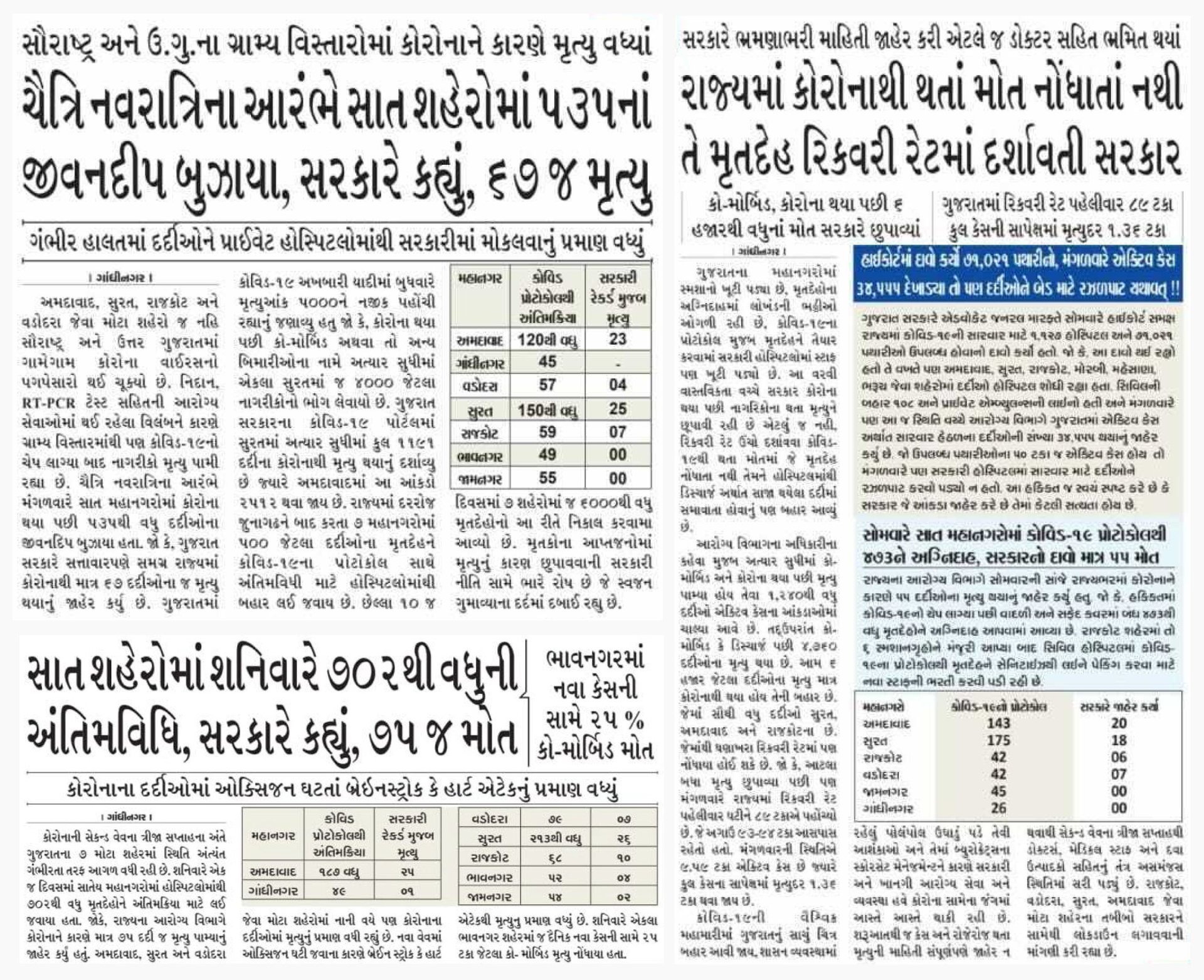
In every city, Sandesh’s findings eclipsed the official data.
Sandesh’s counts were consistently higher than the official number of Covid deaths being reported in the state.
There could be several reasons why the government’s numbers are lower. For one, those with co-morbidities are left out of the final death toll. This is despite the fact that the Indian Council of Medical Research (ICMR) guidelines say that Covid must be listed as the antecedent cause of death and co-morbidities go under “other significant conditions contributing to the deaths.”
“Because hospitals are overwhelmed, many Covid deaths occur at home, especially in rural areas, and are omitted from the official count,” Kayoko Shioda, an epidemiologist at Emory University, told the New York Times. Even in a non-pandemic year, barely one in five deaths are medically certified in India.
While discrepancies in the death data elucidate the crisis is out-of-control, several other systems—medical infrastructure, dearth of staff, and shortage of drugs—have all failed, too.
Where are the Covid-19 medicines and hospital beds?
The first major sign of trouble in Gujarat was the shortage of Remdesivir injections, Pathak said. Shortage, black-marketing, and counterfeiting of the drug were rampant in the state. Soon after, hospital beds began filling up and the medical facilities faced acute oxygen shortages. The state’s vaccination drive was suspended several times due to shortages.
“The Gujarat Model expected that the private sector would take care of health because it was a business and there would be consumers,” Aakar Patel, columnist, and former executive director of Amnesty International India, recently wrote in the National Herald. “That is not how the rest of the world has achieved it.”
In the midst of this dire situation, the government was busy painting a rosy picture.
On May 1, the government launched the “Maru Gam, Corona Mukt Gam” (My village Corona-free village) initiative with much fanfare. Under the initiative, on May 9, the government said it had set up over 137,774 beds. However, on that date, only 5,638 of these were occupied, despite there being over 47,000 active cases as per official data.
“The government’s concept was that whoever is in home isolation should shift to this Covid care center (so they don’t spread the virus) but no one comes there,” said Sandesh’s senior journalist Vivek Oza. He spoke to over 40 village council heads across Gujarat, and they all said they were lacking basic medicines, so people were hesitant to come to the centers.
“If there’s no oxygen and Remdesivir injections, that’s okay because they have to be administered under medical supervision. But the government said we have medicines, oximeters, thermometers, healthcare workers—none of that true,” Oza said.
While working to bring out the grim reality, the reporters were battling their own demons.
India’s never-ending war against Covid-19 misinformation
The fear of contracting coronavirus constantly looms over field reporters. And during the second wave, Sandesh’s team didn’t escape unscathed. Over half of its staff contracted the virus at some point, including Pathak, who struggled to find a doctor to consult in the second week of April.
Pathak’s wife drove to 13 different pharmacies in Gandhinagar, where they live, before being able to secure just half the Fabiflu tablets he needed.
Apart from the physiological ailments, the psychological impact is grave, too. As Rathod photographed ambulance vans for his Covid death data piece, another grueling story was unfolding in front of his eyes. “Some patients were waiting for so long. If you come at 12pm in an ambulance, your turn (to get treatment) would come on the next day at 12pm,” he said. Several patients he photographed were getting treated in cars, rickshaws, and on sidewalks. Many died waiting.
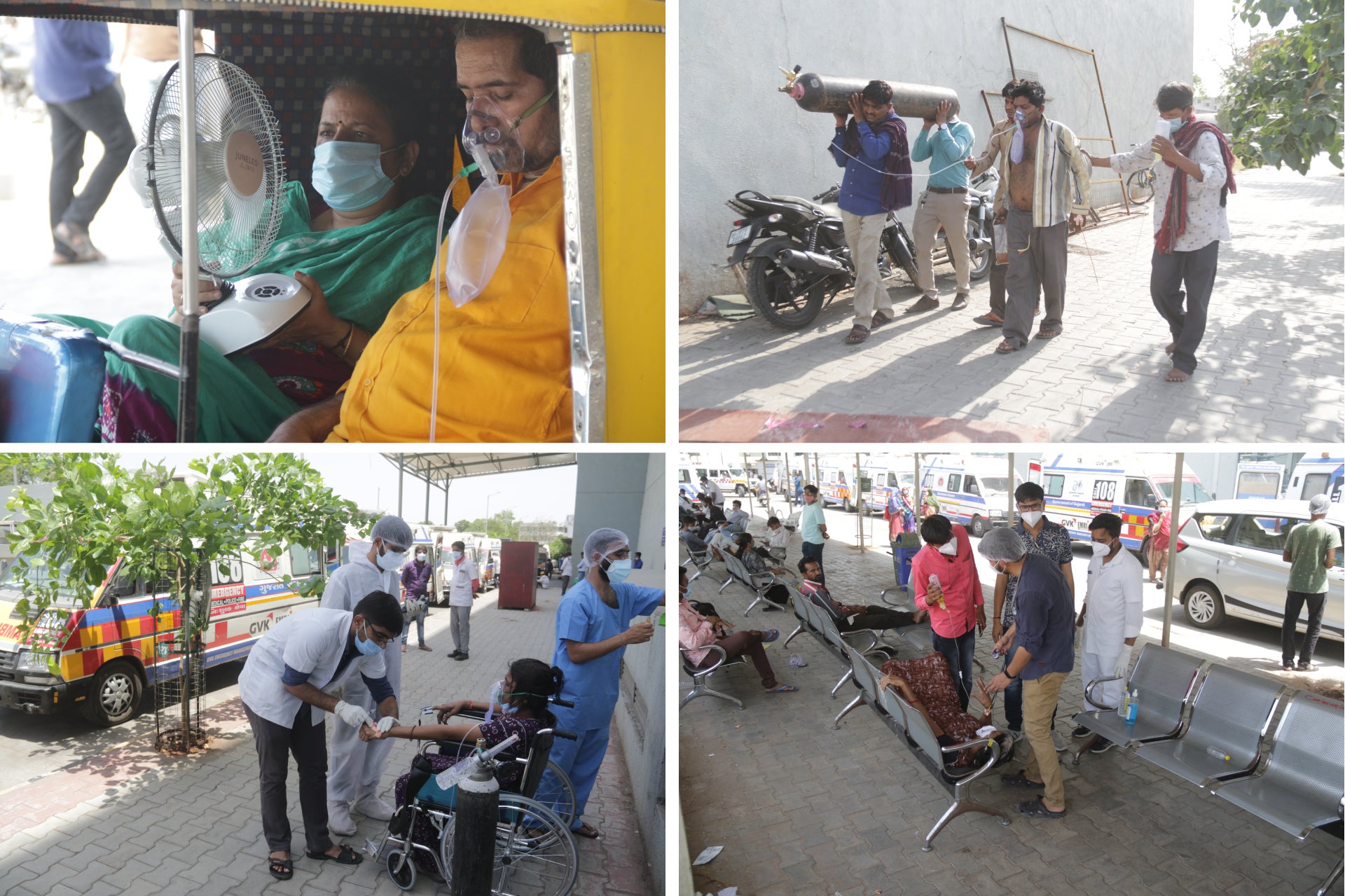
“Witnessing death is never easy but witnessing the extent of death they are all seeing would be overwhelming for anyone,” said Elena Newman, research director at Dart Center for Journalism and Trauma. “When the avoidance or desensitization becomes consistent it may interfere with sensitive ethical storytelling. Similarly, being engaged to the point of obsession is equally problematic. The goal is to find some window between approaching and avoiding that works for the individual.”
As Sandesh reporters try to strike the fine balance, it doesn’t help that the dark comedy refuses to end. For instance, in a village called Morva Hadaf, there were patients during a minister’s visit to a Covid centre. “As soon as he left, and it was evening, all the patients went home,” said Oza. When the minister was questioned, he said they were patients but later all their reports came back negative. The same happened in another Gandhinagar district village, Oza said, adding that, “this has become a photo opportunity.”
Just like the Modi government, Gujarat’s state government has also been downplaying the crisis.
But what keeps the Sandesh team going is the confidence that they’re on the right track. Especially since the government has not disputed any of its reporting. “We had once printed a photo of an ambulance saying it’s lying unused and the next day we got a notice that it’s waiting to be scrapped and we were happy to issue a correction,” said Pathak. “But with these data, they have nothing to deny. And we have supporting evidence.”
Correction: An earlier version of this item incorrectly referred to Ahmedabad as the capital of Gujarat.